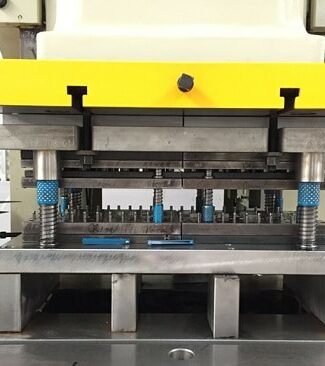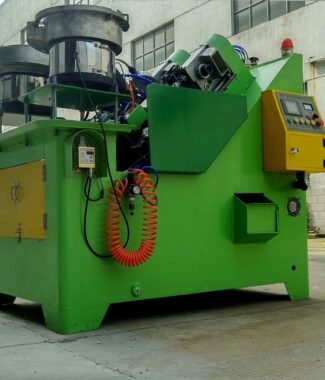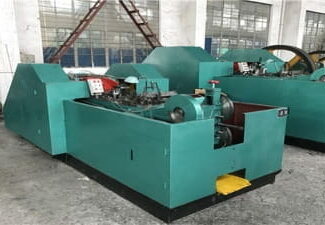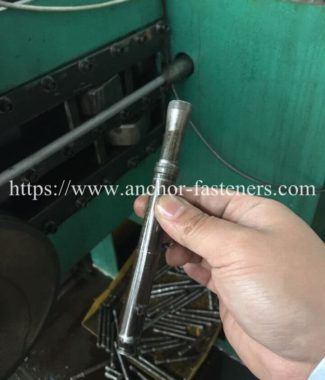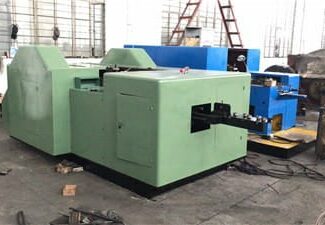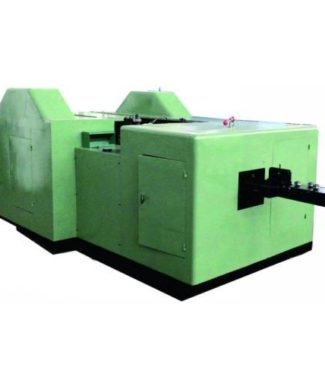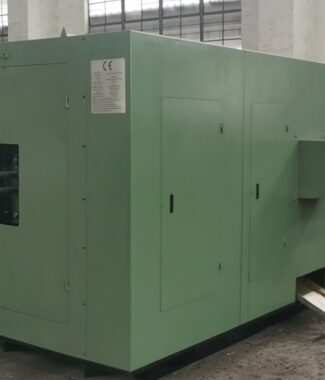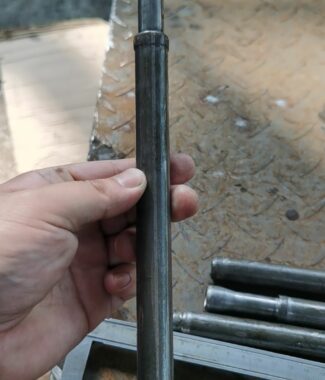Description
Running video of 20MM wedge anchor clip sheet metal Progressive stamping mould
6MM wedge anchor clip sheet metal Progressive pressing die
| Line | Description | Parameters |
|---|---|---|
| 1 | Design: | As per standard wedge anchor clips design, customer design and specific requirements |
| 2 | Accept drawing format: | .pdf/.jpg / .dwg / .igs / .stp etc.. |
| 3 | Material: | carbon steel, alloy steel, stainless steel, high-speed steel and etc. |
| 4 | Size: | Accordng to the drawings or Customized drawing |
| 5 | Material standard: | If there is no any specially requirement, we often sugguest our customer to try the equivalent China National (GB) standard material that our engineering team proposes which to be properly converted from ANSI, ASTM, SAE, EN, DIN, BS, JIS, and etc., to contribute the material cost control. If it is necessary to use exact designated material no., it is also possible choice. |
| 6 | Components and types: | sheet metal high speed Progressive stamping die,blanking die,trimming die,punching die,flanging die,bending die, drawing die and etc. |
| 7 | Fuctions and usage: | -blanking-piercing-cutting off-trimming-stretching-deep drawing-flanging-bending-plunge-bulging-finishing |
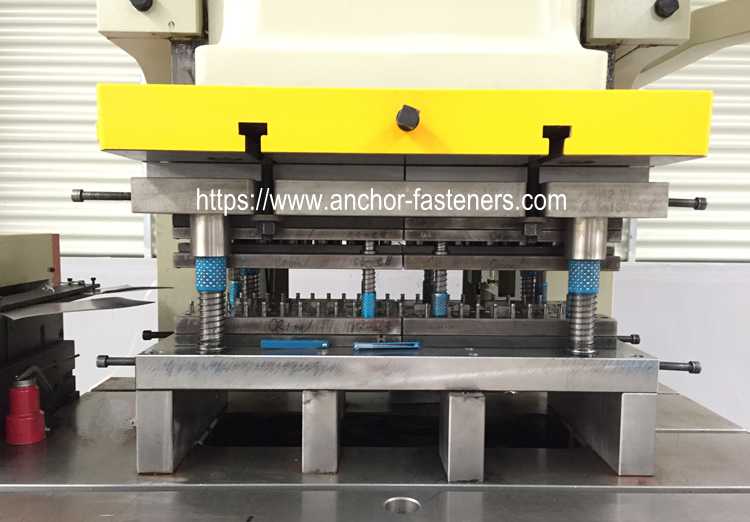
wedge anchor clip sheet metal Progressive stamping die
Progressive stamping is a metalworking method that can encompass punching, coining, bending and several other ways of modifying metal raw material, combined with an automatic feeding system.
The feeding system pushes a strip of metal (as it unrolls from a coil) through all of the stations of a progressive stamping die. Each station performs one or more operations until a finished part is made. The final station is a cutoff operation, which separates the finished part from the carrying web. The carrying web, along with metal that is punched away in previous operations, is treated as scrap metal. Both are cut away, knocked down (or out of the dies) and then ejected from the die set, and in mass production are often transferred to scrap bins via underground scrap material conveyor belts.
The progressive stamping die is placed into a reciprocating stamping press. As the press moves up, the top die moves with it, which allows the material to feed. When the press moves down, the die closes and performs the stamping operation. With each stroke of the press, a completed part is removed from the die.
Since additional work is done in each “station” of the die, it is important that the strip be advanced very precisely so that it aligns within a few thousandths of an inch as it moves from station to station. Bullet shaped or conical “pilots” enter previously pierced round holes in the strip to assure this alignment since the feeding mechanism usually cannot provide the necessary precision in feed length.
Progressive stamping can also be produced on transfer presses. These are presses that transfer the components from one station to the next with the use of mechanical “fingers”. For mass productionof stamped parts which do require complicated in-press operations, it is always advisable to use a progressive press. One of the advantages of this type of press is the production cycle time. Depending upon the part, productions can easily run well over 800 parts/minute. One of the disadvantages of this type of press is that it is not suitable for high precision deep drawing which is when the depth of the stamping exceeds the diameter of the part. When necessary, this process is performed upon a transfer press, which run at slower speeds, and rely on the mechanical fingers to hold the component in place during the entire forming cycle. In the case of the progressive press, only part of the forming cycle can be guided by spring-loaded sleeves or similar, which result in concentricity and ovality issues and non uniform material thickness. Other disadvantages of progressive presses compared to transfer presses are: increased raw material input required to transfer parts, tools are much more expensive because they are made in blocks with very little independent regulation per station; impossibility to perform processes in the press that require the part leave the strip (example beading, necking, flange curling, thread rolling, rotary stamping etc.).
The dies are usually made of tool steel to withstand the high shock loading involved, retain the necessary sharp cutting edge, and resist the abrasive forces involved.
The cost is determined by the number of features, which determine what tooling will need to be used. It is advised to keep the features as simple as possible to keep the cost of tooling to a minimum. Features that are close together produce a problem because it may not provide enough clearance for the punch, which could result in another station. It can also be problematic to have narrow cuts and protrusions.
Applications
An excellent example of the product of a progressive die is the lid of a beverage can. The pull tab is made in one progressive stamping process and the lid & assembly is made in another, the pull tab simultaneously feeding at a right angle into the lid & assembly process. Also various car brake calipers have plates that are bent into shape, possibly cut too using these methods.
See also
The Benefits of High Volume Progressive Stamping
With progressive metal stamping, ESI eliminates those hassles and inefficiencies. A progressive stamping tool features a number of stations, each with a unique function.
As strip metal feeds through a progressive stamping press, unrolling steadily from a coil, each station in the tool performs a different cut, punch, or bend.
The actions of each successive station add onto the work of the previous stations, resulting in a completed part.
For very simple parts, progressive die metal stamping may not be the best option. But there are many scenarios in which progressive stamping is ideal. Advantages of progressive stamping include:
 Speed: With a continual feed of material, progressive stamping machines operate at extremely high speeds of hundreds of parts per minute and with minimal downtime.
Speed: With a continual feed of material, progressive stamping machines operate at extremely high speeds of hundreds of parts per minute and with minimal downtime.- Low Labor Cost: One operator can oversee many machines that run unattended due to electronic monitoring embedded in our custom tooling.
- Run Length: The same continual feed of material that provides progressive stamping it’s speed also allows for long production runs. More production time between material changes means more completed parts in shorter amounts of time.
- Minimal Scrap: Scrap metal is inevitable in any manufacturing process, but it is minimized by optimized tool design of progressive stamping.
- Quick Setup: Multiple setups, tool changes, and die changes are required to produce complex parts with conventional short-run stamping methods; only one setup is required to produce completed parts using progressive stamping.
- Complex Geometry: Creation of parts with complex geometries is possible by the building nature of the die stations in a progressive tool.
- High Repeatability: The dies of a progressive stamper are hard tooled. They can withstand the high volume runs of progressive stamping without degrading, maintaining the high quality of the parts produced.
- Low Part Cost: These factors combine to reduce the per part cost of parts manufactured by progressive stamping.
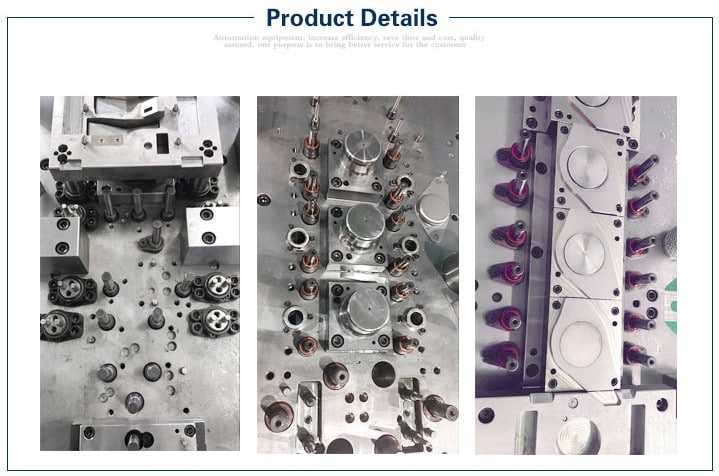
wedge anchor clip sheet metal Progressive stamping die details

wedge anchor clip sheet metal Progressive stamping die making process

sheet metal Progressive stamping die stamping automotive parts
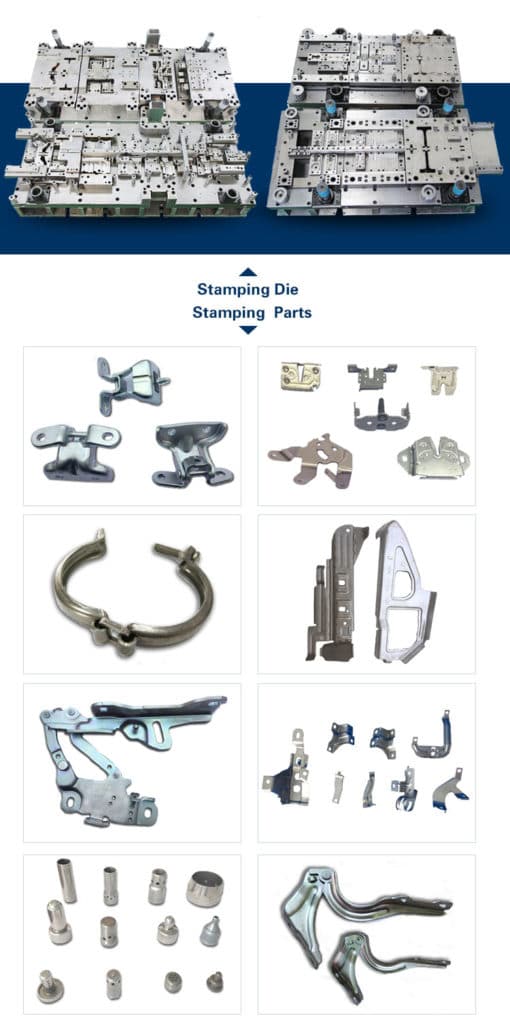
sheet metal Progressive stamping die and stamping auto motive part
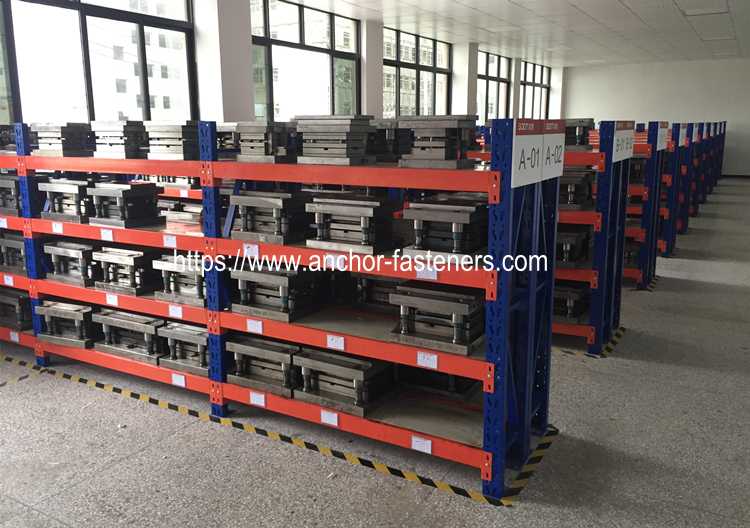
wedge anchor clip sheet metal Progressive stamping die storage
PROGRESSIVE DIE VS. TRANSFER DIE STAMPING
The two types of die stamping processes you may encounter are progressive die stamping and transfer die stamping. What do these different types of stamping entail, and what are the advantages and disadvantages of each? What types of applications are most common to transfer die vs. progressive die stamping and vice versa?
WHAT IS PROGRESSIVE DIE STAMPING?
In progressive die stamping, a coil of metal is fed through a machine that consists of a series of stamping stations that perform simultaneous operations. The metal strip moves through the drawing process, with each progressive die station altering the configuration on the metal from the previous station. Once the metal has gone through the entire machine and all the stamping stations, the piece will be complete.
WHAT ARE THE ADVANTAGES OF PROGRESSIVE DIE STAMPING?
Progressive die stamping is well-suited to operations needing to produce many small pieces quickly, since you can perform multiple cutting and forming operations simultaneously. This combining of operations can also save on costs, although you will have to pay for permanent tool steel die sets. Progressive die stamping can also allow you to maintain close tolerances if you have the right tools.
WHAT APPLICATIONS TYPICALLY USE PROGRESSIVE DIE STAMPING?
You can find progressive die stamping in a variety of industries, including automotive, locomotive, heavy trucks and RVs, medical, electronics and agriculture.
WHAT IS TRANSFER DIE STAMPING?
In transfer die stamping, rather than feed the metal part through a series of stations, a mechanical transport system transfers the part from station to station. The transfer die can be a single die or part of several dies lined up in a row. Transfer die stamping is used to perform operations on the part free from the strip.
WHAT ARE THE ADVANTAGES OF TRANSFER DIE STAMPING?
Transfer die stamping tends to be more economical than progressive die stamping. It is also much more versatile than progressive die stamping. If your part has features like cut-outs, pierced holes, ribs, knurls or threading, you can use transfer die stamping to work these into regular press operations so that you don’t need secondary operations at added cost.
WHAT APPLICATIONS TYPICALLY USE TRANSFER DIE STAMPING?
You will use transfer die stamping when you have large parts you need to transfer between multiple presses to complete them, such as shells, tube applications, frames and structural components. You can find transfer die stamping in all the industries where you find progressive die stamping. It all depends on the specific type of part you are stamping and your requirements for that part.

